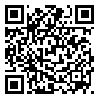Volume 33, Issue 2 (In-Press 2024)
JGUMS 2024, 33(2): 0-0 |
Back to browse issues page
Research code: برگرفته از طرح نمیباشد.
Ethics code: این مقاله از نوع مروری است که هیچگونه آزمایشی بر روی ا
Download citation:
BibTeX | RIS | EndNote | Medlars | ProCite | Reference Manager | RefWorks
Send citation to:



BibTeX | RIS | EndNote | Medlars | ProCite | Reference Manager | RefWorks
Send citation to:
Rostamani H, Fakhraei O, Toosizadeh Khorasani F, Kelidari N. A Review of 3D Bioprinting Technologies in the Reconstruction of Human Nasal Cartilaginous Tissue. JGUMS 2024; 33 (2)
URL: http://journal.gums.ac.ir/article-1-2574-en.html
URL: http://journal.gums.ac.ir/article-1-2574-en.html
1- Department of Biomedical Engineering, Mashhad Branch, Islamic Azad University, Mashhad, Iran
2- Department of Biomedical Engineering, Mashhad Branch, Islamic Azad University, Mashhad, Iran ,omid.fakhraei@mshdiau.ac.ir
2- Department of Biomedical Engineering, Mashhad Branch, Islamic Azad University, Mashhad, Iran ,
Abstract: (956 Views)
Background: Frequent nose defects due to inborn causes or accidents have increased the demand for rhinoplasty. In addition to a functional defect, nose defects are also known as a aesthetic defect because the shape of the nose is one of the most prominent features that define the human face. So common reconstruction methods could not meet the requirements caused by limitations.
Objective: This study aimed to investigate the ability of different three-dimensional bioprinting methods to repair defects in the nose area.
Methods: In this review study, articles available in ScienceDirect, Springer, Wiley, Cambridge, De Gruyter and Google Scholar databases were used. The search was done using the keywords tissue engineering, nasal cartilage, 3D bioprinting and bioink materials and with a time limit of the last 4 years. Out of 300 eligible articles, 159 articles were finally reviewed.
Results: Bioprinting has special potential for repairing nasal cartilaginous tissue. Hydrogels have become an excellent option for mimicking the microenvironment of the host tissue due to their porosity and ability to load different materials, as well as their ability to absorb water and encapsulate cells. On the other hand, the two main cell sources for tissue engineering of nasal cartilage are autologous chondrocytes and mesenchymal stem cells.
Conclusion: The results of this study demonstrated that bioprinting technology can biomimic the cartilage host tissue to an acceptable degree morphologically, biochemically, and mechanically to be implanted surgically. Although the use of bioprinting at the clinical level still faces limitations, the prospect of this technology is promising since it can fix nasal defects with low cost, unique accuracy, and personalization.
Objective: This study aimed to investigate the ability of different three-dimensional bioprinting methods to repair defects in the nose area.
Methods: In this review study, articles available in ScienceDirect, Springer, Wiley, Cambridge, De Gruyter and Google Scholar databases were used. The search was done using the keywords tissue engineering, nasal cartilage, 3D bioprinting and bioink materials and with a time limit of the last 4 years. Out of 300 eligible articles, 159 articles were finally reviewed.
Results: Bioprinting has special potential for repairing nasal cartilaginous tissue. Hydrogels have become an excellent option for mimicking the microenvironment of the host tissue due to their porosity and ability to load different materials, as well as their ability to absorb water and encapsulate cells. On the other hand, the two main cell sources for tissue engineering of nasal cartilage are autologous chondrocytes and mesenchymal stem cells.
Conclusion: The results of this study demonstrated that bioprinting technology can biomimic the cartilage host tissue to an acceptable degree morphologically, biochemically, and mechanically to be implanted surgically. Although the use of bioprinting at the clinical level still faces limitations, the prospect of this technology is promising since it can fix nasal defects with low cost, unique accuracy, and personalization.
Review Paper: Applicable |
Subject:
General
Received: 2022/12/22 | Accepted: 2023/10/30 | Published: 2024/06/30
Received: 2022/12/22 | Accepted: 2023/10/30 | Published: 2024/06/30
| Rights and permissions | |
 | This work is licensed under a Creative Commons Attribution-NonCommercial 4.0 International License. |







